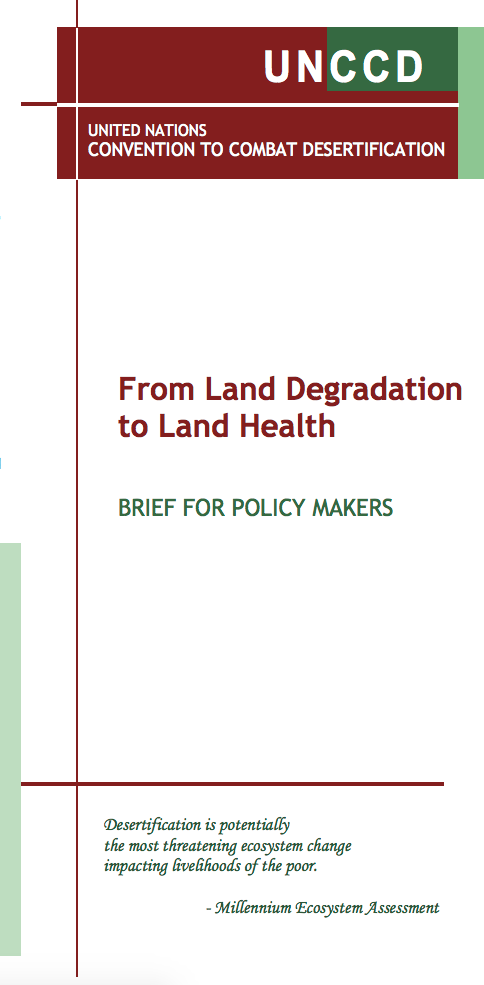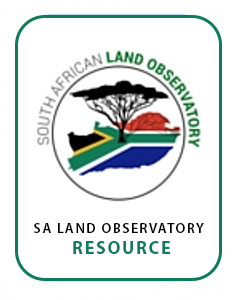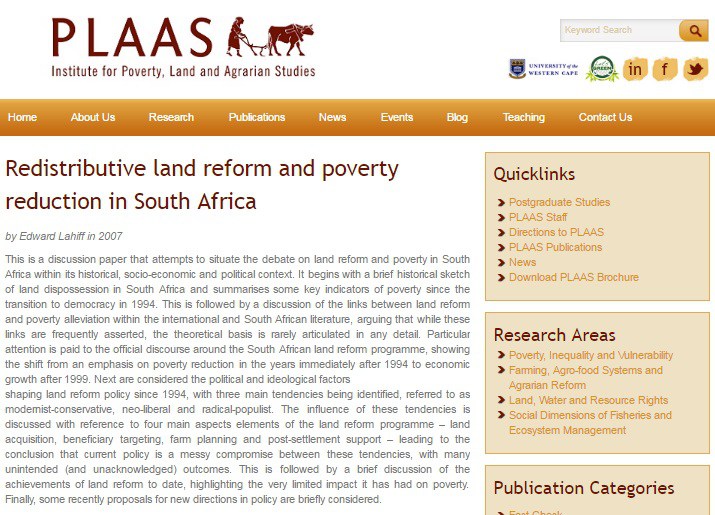système d'exploitation agricole
AGROVOC URI:
Watershed conservation-based market oriented commodity development: A move towards resilient farming?
Women farm fish: Gender and commercial fish cage culture in the Upper Ping River northern Thailand
From Land Degradation to Land Health
This is a brief for Policy Makers titled "From Land Degradation to Land Health"
Groundwater Irrigation Management and the Existing Challenges from the Farmers’ Perspective in Central Iran
The sustainable management of natural resources, and particularly groundwater, presents a major challenge in arid regions to ensure security of water supply and support agricultural production. In many cases, the role of smallholder farmers is often neglected when managing irrigated water and land processes.
Spatial Modeling of Soil Erosion Risk and Its Implication for Conservation Planning: the Case of the Gobele Watershed, East Hararghe Zone, Ethiopia
Soil erosion by water has accelerated over recent decades due to non-sustainable land use practices resulting in substantial land degradation processes. Spatially explicit information on soil erosion is critical for the development and implementation of appropriate Soil and Water Conservation (SWC) measures.The objectives of this study were to estimate the magnitude of soil loss rate, assess the change of erosion risk, and elucidate their implication for SWC planning in the Gobele Watershed, East Hararghe Zone, Ethiopia.
Effect of Feeding System on Enteric Methane Emissions from Individual Dairy Cows on Commercial Farms
This study investigated the effects of feeding system on diurnal enteric methane (CH4) emissions from individual cows on commercial farms. Data were obtained from 830 cows across 12 farms, and data collated included production records, CH4 measurements (in the breath of cows using CH4 analysers at robotic milking stations for at least seven days) and diet composition. Cows received either a partial mixed ration (PMR) or a PMR with grazing. A linear mixed model was used to describe variation in CH4 emissions per individual cow and assess the effect of feeding system.
Estimation of the Spatiotemporal Patterns of Vegetation and Associated Ecosystem Services in a Bornean Montane Zone Using Three Shifting-Cultivation Scenarios
Tropical countries are now facing increasing global pressure to conserve tropical forests, while having to maintain cultivated lands (particularly shifting cultivation) for the subsistence of local people. To accomplish the effective conservation of tropical forests in harmony with subsistence shifting cultivation, we evaluated the influence of shifting cultivation on ecosystem services (i.e., biodiversity and carbon stock) at a landscape level based on three land-use scenarios.
Draft policy document on the preservartion and developemnt of agricultural land
The preservation, development and sustainable use of agricultural land are of vital importance to ensure long-term food security. On a global level, food security is closely linked to Goal 1 of the Millennium Development Goals, namely to eradicate extreme poverty and hunger by, amongst others, halving, between 1990 and 2015, the proportion of people who suffer from hunger.
Land Reform and Poverty in South Africa
The extent of land dispossession of the indigenous population in South Africa, by Dutch and British settlers, was greater than any other country in Africa, and persisted for an exceptionally long time. European settlement began around the Cape of Good Hope in the 1650s and progressed northwards and eastwards over a period of three hundred years.
Redistributive land reform and poverty reduction in South Africa
At the end of Apartheid, approximately 82 million hectares of commercial farmland (86% of total agricultural land, or 68% of the total surface area) was in the hands of the white minority (10.9% of the population), and concentrated in the hands of approximately 60,000 owners (Levin and Weiner 1991: 92). Over thirteen million black people, the majority of them poverty-stricken, remained crowded into the former homelands, where rights to land were generally unclear or contested and the system of land administration was in disarray (Hendricks 1990; Cousins 1996; Lahiff 2000).
Guns, Cronies and Crops - How military, political and business cronies have conspired to grab land in Myanmar (English, Burmese မန်မာဘာသာ)
As Myanmar’s junta prepared to step down from government, the military set about seizing public assets and natural resources to ensure its economic control in a new era of democratic rule.
Guns, Cronies and Crops details the collusion at the heart of operations carried out by Myanmar’s armed forces in northeastern Shan State. Large swathes of land were taken from farming communities in the mid-2000s and handed to companies and political associates to develop rubber plantations.








